Written by Microscope Hunt Authority
6 Different Types of Microscopes let you explore the hidden creatures around you! Watch tiny organisms come to life, learn about science, and capture stunning close-up photos

Get ready to dive into the unique world of microscopes. It is a special device that increases the size of small objects to see them better. Microscopes have been integrated into schools, research labs, hospitals, and even homes by people who are curious about the unseen world that lies within and around us. This device helps us view objects and organisms that cannot be viewed by the eye such as blood, bacteria, and many more. In this write-up, we are going to discuss the types of microscopes and their functions in the most basic way so that we don’t lose our intended audience, be it students, teachers, professionals, or any biology buff who would relish learning about biology.
What is a Microscope
As stated above, microscopes enhance the view available of an object to give its details. They use lenses to increase the size of small items such as cells, and even tiny bugs. As with most devices, microscopes have uses in science and medicine as well, in fact they are relied on heavily. Psychiatrists require having the best equipment to ensure diseases are detected in a timely manner and scientists require studying organisms. Students studying for their biology class need reliable equipment for understanding the concepts that are being taught. Knowing how to differentiate the varying types of microscopes makes it easier to select the equipment considering the purpose they want to serve.
Compound Microscope
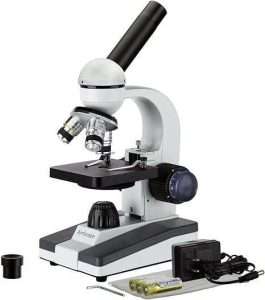
The most common one is an optical microscope; it uses visible light and a few lenses to magnify the sample. This microscope often grazes through the classroom and biology lab. It is well-suited for observing thin sections of plant and animal cells as well as bacteria. A compound microscope can make things look much bigger, usually between 40 times and 1000 times their actual size.. Less complicated, cost-effective, and perfect for educational and simple purposes are their characteristics.
Stereo Microscope
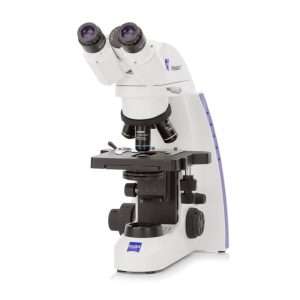
Stereo microscopes can be used to view objects in three dimensions. It has two eyepieces and shines light from above to help you see the sample clearly. Solid objects such as insects, flowers, coins, or small mechanical parts should be viewed under a dissecting microscope. It has a lower magnification power, between 10x and 100x. Professionals, students, and hobbyists who need a three-dimensional view will find it useful.
Digital Microscope
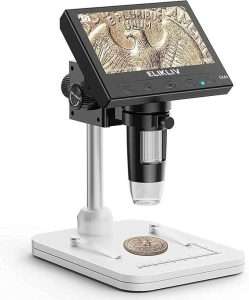
A digital microscope connects to a monitor or computer and shows the zoomed-in image right on the screen. You view the image on a monitor rather than through eyepieces. Some digital microscopes let you record videos and photographs of what you observe. They are handy for sending photos, presentations, and classroom instruction. Schools, hobbyists, and offices requiring documentation use digital microscopes.
Electron Microscope
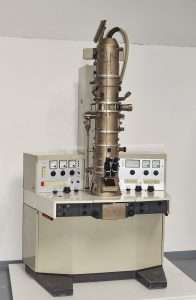
To magnify objects, an electron microscope uses electrons rather than light. At a far greater magnification than light microscopes, it can reveal minute features. The two primary kinds are:
- Scanning Electron Microscope (SEM): shows a three-dimensional view of the sample’s surface, helping you see its details and texture.
- Transmission Electron Microscope (TEM): Shows the interior details of a very thin sample.
Research laboratories and businesses use these microscopes. Magnifying things to millions of times, they expose atomic level detail. Scientists and engineers mostly use them.
Fluorescence Microscope
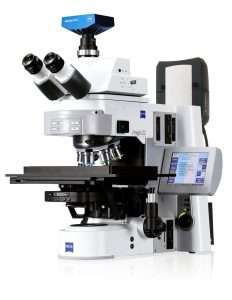
Special lights and dyes in this microscope cause sample components to shine. Often, scientists use it to view particular cell or tissue components. It aids in locating the sites of particular chemicals or proteins. Common in cell biology and medical research are fluorescence microscopes. They help doctors understand diseases better and develop treatments.
Confocal Microscope
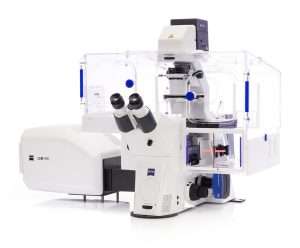
The confocal microscope is a sophisticated version of the fluorescence microscope. It employs lasers to scan samples and construct clear, sharp images. Scanning in various depths, it can construct 3D images of the sample. It is extremely useful for examining thick samples or acquiring detailed views of cells and tissues. Confocal microscopes are extensively used in advanced biology and medical laboratories.
Comparison of Microscopes
Here’s a simple comparison to help understand the different types of microscopes and their uses:
.
| Microscope Type | Magnification | View Type | Best For | Used In |
|---|---|---|---|---|
| Compound Microscope | 40x – 1000x | 2D | Cells, bacteria | Schools, general labs |
| Stereo Microscope | 10x – 100x | 3D | Solid objects like insects, plants | Dissection, electronics, hobbies |
| Digital Microscope | Varies | 2D/Monitor | Images/videos of small objects | Teaching, sharing, documentation |
| Electron Microscope | Up to 10,000,000x | 3D (SEM), 2D (TEM) | Surfaces, inside of samples | Research labs, industry |
| Fluorescence Microscope | 200x – 2000x | Glowing view | Specific cell parts | Medical and biological research |
| Confocal Microscope | 200x – 2000x | 3D | Detailed 3D views of cells | Advanced research labs |
Each type of microscope is useful for different things. That’s why it’s important to learn about the different types of microscopes and their uses before buying or using one.
Who Uses Microscopes
- Students learn more about science using light and stereo microscopes.
- Doctors diagnose issues in blood and tissue samples using microscopes.
- Cell, viruses and other materials are studied by scientists with more advanced tools such as electron and confocal microscopes.
- Tiny portions of stamps, bugs and other stuff are examined by hobbyists using stereo and digital microscopes.
Regardless of the reason functioning with microscopes, one has to understand the scope options to choose which is most suitable and handy.
Final Thoughts
Every item we encounter daily, from the light microscope to the powerful electron microscope, has a world inside waiting to be discovered. Living things and items we cannot see with the naked eye can be viewed through microscopes, and learning all the microscopes and their features allows us to have powerful discoveries. No matter if you are learning, working, or just exploring, the appropriate microscope will extend your tiny territory.
